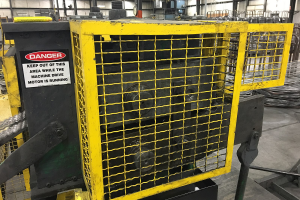OSHA Electronic Records Submission Delayed, But Not for Long
OSHA recently announced another delay in the deadline for employers to electronically submit their 2016 injury and illness data to the agency. While there are plenty of indications that the new agency leadership will seek to reconsider, revise, or even rescind the amended recordkeeping rules, it appears that the most recent deadline, December 15, 2017, will stand.
As a brief recap, the revised recordkeeping rule requires employers with 250 or more employees to submit their OSHA 300A Annual Summaries for each separate establishment by December 15. Establishments with 20 to 249 employees that are identified as being in alleged “high hazard industries” are also required to submit their 300A Annual Summaries by the same date. While one might think that the list of supposed “high hazard industries” is short, it is actually extensive. The list covers all or portions of industries such as construction, manufacturing, retail and department stores, hospitals, nursing homes, and even amusement parks and arcades.
Beginning in 2018, large employers (250 employees or more) will be required to submit not only the 300A Annual Summary, but also the more detailed OSHA 300 Log and 301 Incident Reports. OSHA intends to upload all of this data to a publicly searchable website. Not only will the data be online and searchable, the underlying documents will be public records subject to disclosure to the media, plaintiffs’ lawyers, and competitors. The stability and security of the web portal through which the records will be submitted is also in question, especially given that the portal was taken down for a period of time because of a suspected hack.
There is potential good news for employers on the horizon. There is a lawsuit challenging the rule pending in federal district court. While the case has been stayed while the new OSHA administration considers revising or rescinding the rule, the court has required OSHA to submit periodic updates on the status of the proposed changes. In the most recent update filed with the court, OSHA indicated that it has drafted a significant portion of a new Notice of Proposed Rulemaking, and that the agency’s economists had made progress on evaluating the proposed rule’s economic impact. The inclusion of an economic analysis signals that the changes to the recordkeeping rule will be substantial because such analysis is only legally required for major changes to rules.
While employers should be optimistic about the prospect of future business-friendly changes to the recordkeeping rules, all of the provisions of the Obama-era recordkeeping rule remain in full force. So, if you are an employer, you have roughly two weeks to determine whether you are covered under the rule, set up an account and familiarize yourself with OSHA’s Injury Tracking web portal, and submit your 2016 OSHA 300A Annual Summaries for each qualifying establishment.
If you have any questions about whether you are covered by the electronic submission requirements, what you should submit, or how to submit it, please contact the safety professionals at FDRsafety.


